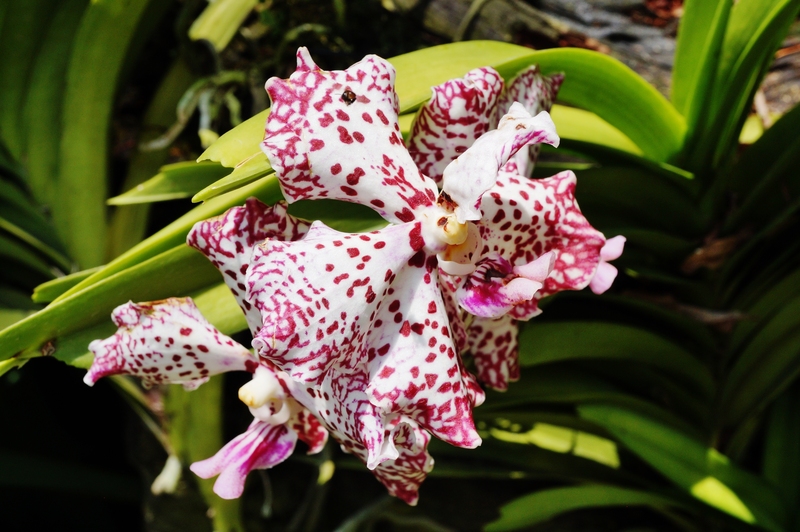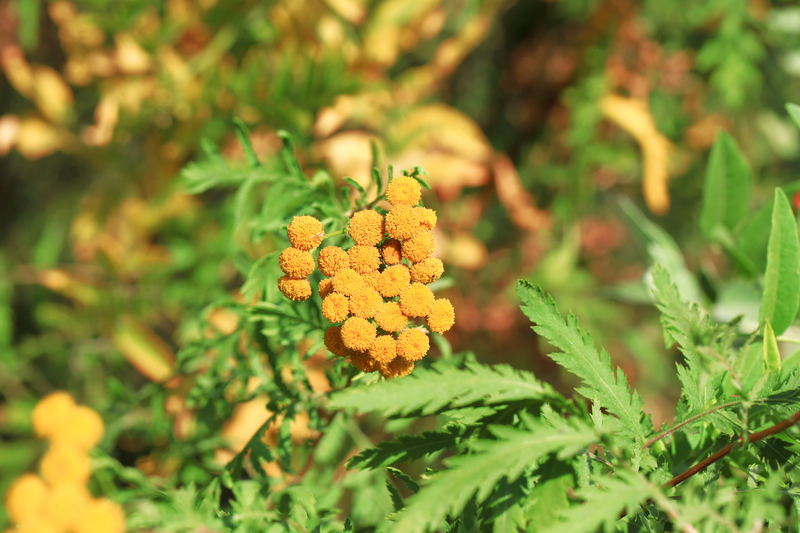A Beginner's Guide to Container Gardening
Posted on 14/08/2025
A Beginner's Guide to Container Gardening
Interested in starting a garden but don't have much space? Container gardening offers a flexible and convenient way to bring lush greenery and fresh produce into your home or apartment, no matter how limited your space may be. In this comprehensive beginner's guide to container gardening, you'll discover essential tips, techniques, and ideas so you can cultivate a vibrant garden in pots, planters, and other creative containers. Whether you're growing vegetables, herbs, or ornamental plants, this guide will provide everything you need to get started and thrive!
What is Container Gardening?
Container gardening is the practice of growing plants exclusively in containers rather than directly in the ground. This method allows for greater mobility, flexibility, and control over the gardening environment. Common containers include pots, planters, baskets, barrels, and even recycled items like buckets or old boots!
Why Choose Container Gardening?
- Space Efficient: Container gardens are perfect for balconies, patios, rooftops, and even windowsills--ideal for urban dwellers and those with limited space.
- Improved Control: You control the soil quality, water intake, sunlight exposure, and mobility of your plants.
- Decorative: Containers allow for creative arrangements, adding beauty and style to your living space.
- Accessibility: Easier on your back and knees; containers can be placed at convenient heights.
- Pest Management: Elevated or isolated plants can be easier to manage for pests and diseases.

Choosing the Right Containers for Your Garden
Container selection is a critical first step in successful container gardening. Here are important factors to consider:
Types of Containers
- Terracotta Pots: Porous and classic, but can dry out quickly; suitable for drought-tolerant plants.
- Plastic or Resin Pots: Lightweight, affordable, and they retain moisture well; available in many shapes and colors.
- Ceramic Planters: Heavier and stylish, but can be expensive and less portable.
- Wooden Containers: Natural look and good insulation, but they may degrade over time. Cedar or redwood resist rot best.
- Metal Buckets or Tubs: Trendy and durable; ensure drainage holes to prevent waterlogging.
- Recycled Items: Use old boots, teapots, or crates for a unique, upcycled touch!
Container Size and Drainage
Size matters in container gardening. Larger pots retain more moisture, support bigger roots, and require less frequent watering. Always choose containers with adequate drainage holes to avoid soggy soil and root rot. If your favorite container lacks holes, consider drilling some or using it as a decorative cachepot (holder) for a plain inner pot with proper drainage.
Picking the Perfect Potting Mix
Unlike ground soil, container soil must provide nutrients, support, and water retention in a limited space. Avoid using garden soil alone in containers--it's too dense and can lead to diseases.
Best Potting Mix for Containers
- Choose a high-quality potting mix (also called soilless mix or potting soil) tailored for containers.
- Look for ingredients like peat moss, coco coir, perlite, compost, and vermiculite--these materials ensure aeration, moisture retention, and nutrients.
- You can add slow-release fertilizer to provide steady nutrients, or select blends with fertilizer mixed in.
- For specialized plants (such as succulents and orchids), choose the appropriate type of potting mix for best results.
What to Grow in Containers
One of the biggest advantages of container gardening is its wide variety of plant options. Whether you're interested in a practical vegetable garden, fragrant herbs, or decorative flowers, containers can accommodate your needs. Here's a rundown of popular choices:
Edible Container Gardens
- Herbs: Basil, parsley, chives, thyme, mint, coriander, and oregano thrive in pots and require minimal space.
- Vegetables: Tomatoes, peppers, lettuce, spinach, radishes, beans, and dwarf carrots are all great for container vegetable gardening.
- Fruit Plants: Strawberries, blueberries (in acidic soil), and dwarf fruit trees do well in large containers.
Flower Container Gardens
- Annuals: Petunias, marigolds, impatiens, and pansies provide colorful displays through the season.
- Perennials: Hostas, lavender, sedum, and daylilies add enduring beauty year after year.
- Bulbs: Tulips, daffodils, and lilies can be planted in pots for stunning spring blooms.
Indoor Container Gardening
- Houseplants: Spider plants, pothos, snake plant, and fiddle leaf fig thrive indoors in containers.
- Succulents & Cacti: Low maintenance and striking, these are perfect for beginners and busy gardeners.
How to Plant in Containers: Step-by-Step Guide
Ready to plant your first container garden? Follow this simple step-by-step guide:
1. Select and Prepare Your Containers
- Choose pots or planters at least 12 inches deep for most vegetables and larger plants.
- Ensure drainage holes are unobstructed.
- Clean containers before use to remove any pests or diseases from previous plants.
2. Add Potting Mix
- Fill the container with potting mix, leaving about 1-2 inches below the rim for watering.
- If using slow-release fertilizer granules, mix them in as directed on the package.
3. Arrange Your Plants
- Loosen roots gently if they are tightly bound.
- Place taller or central plants in the center or back, with trailing varieties near the edges.
- Think about sun, spacing, and growth habits when arranging for optimal results.
4. Water Thoroughly
- After planting, water your container deeply until water drains out the bottom.
- Check frequently, as new plantings often require more water in warm conditions.
5. Position for Best Light
- Most container plants need at least 6 hours of sunlight a day. Adjust based on the specific sunlight requirement of each plant.
Essential Care Tips for Healthy Container Gardens
Understanding how to properly maintain your container garden is key to success! Here's what you need to keep in mind:
Watering
- Containers dry out faster than in-ground gardens--monitor soil moisture daily, especially during summer.
- Water early in the day, soaking the soil until water runs out the drainage holes.
- Avoid letting soil dry out completely, but don't let containers sit in standing water.
Fertilizing
- Supplement container gardens regularly, as nutrients can leach out with watering.
- Liquid fertilizers can be applied every couple of weeks, or use slow-release granules during planting.
- Be cautious--over-fertilizing can be harmful! Always follow label recommendations.
Pruning and Deadheading
- Pinch off spent flowers and dead leaves to encourage new growth and prolong blooming.
- Herbs benefit from regular snipping, which also gives you fresh ingredients!
Pest and Disease Management
- Check leaves and soil regularly for pests like aphids or fungus gnats.
- Use eco-friendly methods such as insecticidal soap or neem oil for control.
- Isolate new or diseased plants to avoid spreading problems.
Overwintering and Seasonal Care
- Some perennials or sensitive plants need protection in winter; move containers indoors or to a sheltered spot when cold weather arrives.
- Empty and store unused containers upside-down to prevent cracking or water-logging during winter.
Creative Container Gardening Ideas
Container gardening is more than just functionality--it's a chance to express your style! Here are a few creative ideas to inspire your next container garden project:
- Themed Planters: Combine culinary herbs, succulents, or pollinator-friendly flowers in color-coordinated pots.
- Vertical Gardens: Use wall-mounted planters, hanging baskets, or tiered shelving for a lush, space-saving display.
- Tower Containers: Stackable planters are perfect for strawberries, lettuce, or cascading flowers.
- Upcycled Containers: Turn old furniture, buckets, or even rain boots into whimsical planters!
- Edible Ornamental Mixes: Mix brightly colored kale, rainbow chard, nasturtium, and edible flowers for a dual-purpose showpiece.
Common Problems and Solutions in Container Gardening
Even the best container gardeners occasionally face challenges. Here are some common problems and how to solve them:
- Wilting or Yellowing Leaves: This could indicate over-watering, under-watering, or root rot. Check soil moisture and drainage.
- Leggy or Weak Plants: Not enough sunlight or overcrowding can cause stretching. Move pots to a sunnier location and thin out crowded plants.
- Bugs or Fungal Diseases: Remove affected leaves, use organic sprays, and improve air circulation around plants.
- Poor Yield or Blooms: Plants may need feeding--apply appropriate balanced fertilizer and ensure they get enough light.
- Stunted Growth: Roots may be pot-bound or container too small. Repot into larger containers if needed.

Frequently Asked Questions about Container Gardening
- How often do containers need watering?
Watering frequency depends on plant type, weather, and pot size, but most containers need watering at least once daily in hot weather. - What is the best fertilizer for container gardens?
Choose a balanced, water-soluble fertilizer or slow-release granules formulated for container use. Different plants have specific nutrient needs. - Can I reuse potting soil?
It's best to refresh or replace soil each season to prevent disease and ensure fertility. If reusing, remove old roots and mix in fresh compost or potting mix. - Are there plants that don't do well in containers?
Large trees or deep-rooted plants may struggle; always choose varieties labeled "compact" or "suitable for containers." - Do containers need to be brought indoors for winter?
This depends on plant hardiness and your climate. Many tender plants or unglazed pots should be protected in freezing weather.
Conclusion: Start Your Container Garden Today!
Now that you've read this thorough beginner's guide to container gardening, you're ready to turn any small space into a personal oasis of greenery.
Remember, container gardening is flexible and forgiving--don't be afraid to experiment with different plants, arrangements, and styles. With a bit of creativity, patience, and the tips shared here, you'll enjoy fresh herbs, flowers, and produce right at home. Happy gardening!
If you found this guide useful, share it with fellow gardening enthusiasts or bookmark it for future reference. Start your container gardening adventure today and discover the joy of growing your own plants, no matter where you live!

